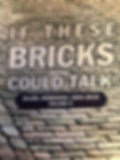
THE HISTORY OF BLAIR, NEBRASKA
If These Bricks Could Talk
by Donna Henton
Blair, Nebraska celebrates 150 years in 2019. Our town is steeped in history and interesting stories. The Carter brothers, railroads and robust businesses helped form our town. Let's not forget the famous people and the political shenanigans in our history.
If these bricks could talk...

BLAIR 1908
DID YOU KNOW?

Henry Ford made many trips to Blair to visit two friends. They all enjoyed fishing in the Missouri River.
Who were his friends?
From 1869 to 1871,
a Blair resident served as
Washington County Sheriff.
He was at Ford's Theatre the night President Abraham Lincoln was shot and he witnessed the event.
JOHN I. BLAIR
Blair was named by one of the nation's wealthiest men, John I. Blair
A pioneer clothing merchant from Norway decided Blair needed squirrels. He purchased many and turned them loose in the parks. The City Council passed an ordinance - no one could bother or harm the squirrels - what happened next?

1874. This is the first two-story brick building in Blair. Do you know where it was located?
Through pictures, maps and a history of each downtown building lot, If These Bricks Could Talk is a colorful 375-page, hard-bound book, filled with interesting tidbits about the buildings in Blair. It will give you a unique insight into the lives of the families and the people who founded Blair and the businesses they created.
We don’t have any products to show here right now.
BOOKS
Volume I
Through pictures and stories you will learn of the early years of Blair.
Washington Street is rich in history. Starting at 15th and Washington, you will read about John Aye and his seed corn center of the world! Gus Rathmann and his blacksmith shop that turned into his Ford car dealership. Jehu H Hungate built his bank building at the corner of 16th and Washington and he was the only pioneer to build two brick buildings on main street, both of which are still standing today. The Castetter family, very prominent in the early development of Blair and then suddenly the Castetter Bank closed in 1921. There was the druggist, the Honorable William Haller, and all his home remedies. EC Pierce bought lots at the March 10, 1869 lot sale and started his undertaking and furniture business. Joe Marks, the traveling peddler, and later he built on Washington Street. PZ the shoe man was a flamboyant merchant. LF Hilton and his 1869 newspaper, his wife Teresa and her millinery shop. Blair had photographers, many grocery stores, harness shops, boot makers, very early on there were implement dealers and livery barns on Washington Street. Volume 1 is 375 pages starting with the Carter Brothers, John I Blair, and Washington Street.
Volume II
Learn about the Courthouse built in 1891, the first hospital located in a hotel, and the Crowell family who invested in Blair in the very early days, built a thriving lumber and grain business and lived in a fabulous mansion. Learn how the railroad bridge of 1883 benefitted Blair, the Post Office building of 1901 and how Blair secured a much larger than needed building than mosts towns. There's the two-story brick schools, the early florists who started their careers at the Crowell family greenhouse and the Castetter family who donated land for the Castetter Park and in 1931 the swimming pool was constructed at the park.
There is so much more: the first telephone company, the Lincoln Highway, the newspapers, the car bridge, the Blair cemetery, the large city hall building completed in 1912, Dana College, the churches, the brick streets and the ferry boats. All of these buildings and businesses happened because brave pioneers came west and settled in Blair. Many of them rest in the Blair Cemetery. All of these early achievements are the foundation of Blair today. The book is 405 full color pages of stories and pictures.
Volume III
This book talks about many of the homes that were built between 1872 and 1910. The blocks between South Street north to Lincoln Street and from 13th Street west to 19th Street were dominated by homes in this time frame, but of course, there are homes in other areas of Blair built in those years. The homes were well-built and many have been updated however much of the interior remains, such as stairways, the woodwork, flooring, and doors. You will learn about the early pioneers who built these homes.
If These Houses Could Talk contains 365 full color pages with photos and information of more than two hundred houses in Blair.
Memories from the Prairie
In 1869, when I was eight, my parents and I came to the new town of Blair. I watched my new town grow from a spot in the prairie to a thriving city. I witnessed the railroad bridge, courthouse, houses, and every building on Washington Street built. In fifty years. my town changed from kerosene lamps to electricity, horses to cars, dusty trails to brick streets. I knew all the pioneers and all the accomplishments. I had a marvelous life in Blair!
BOOKS AVAILABLE LOCALLY at Country Gardens, 1502 Washington Street, Blair.
UPCOMING EVENTS
BIO

Lifelong Blair resident, Donna Henton began researching the history of Blair, Nebraska, three years ago. Hundreds of hours later, the final product is ready to help commemorate and celebrate Blair's 150th birthday!
Donna is married and lives in Blair. She spends her free time attending the activities of her seven grandkids, and reading and working in her yard.



